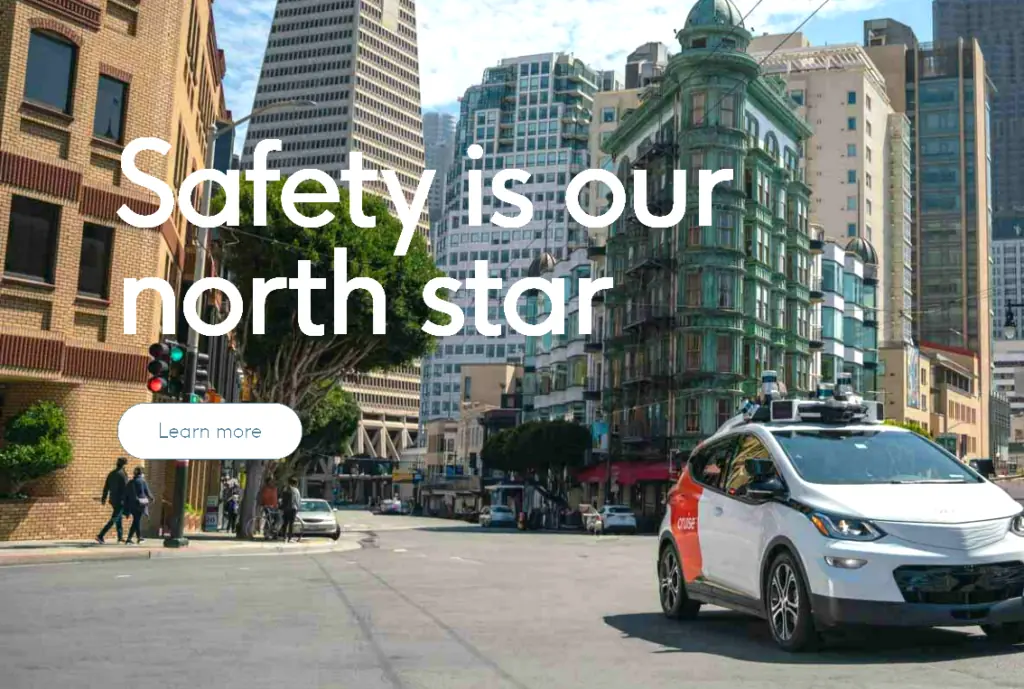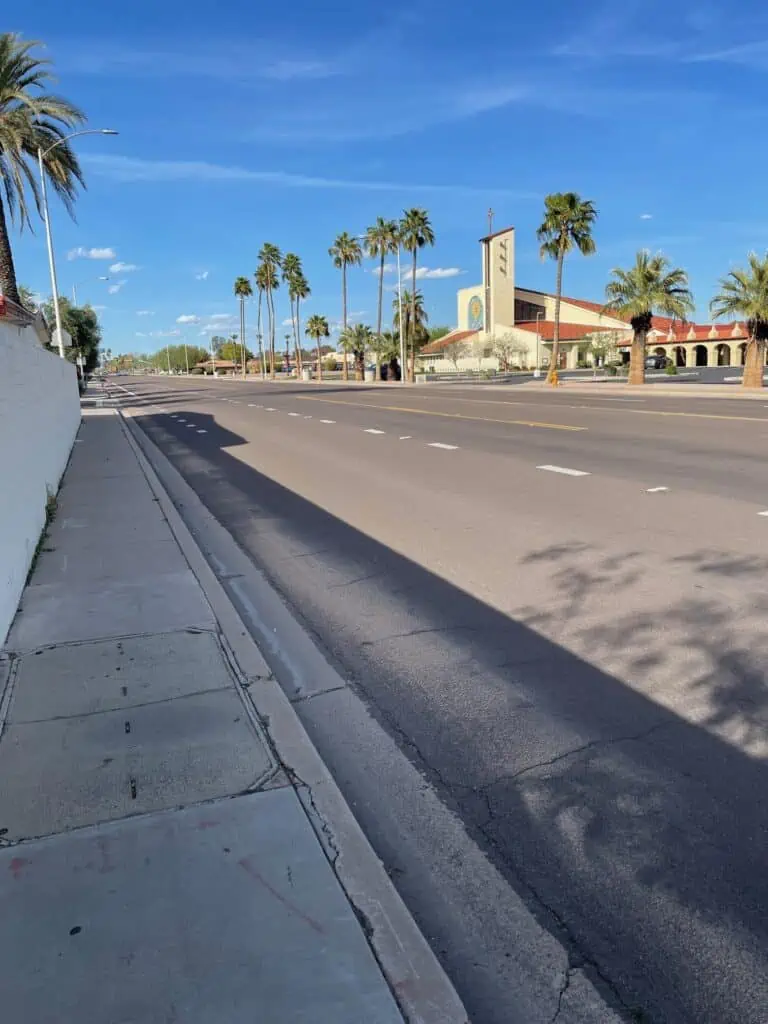
(image: Cruise)
By Colin Barnden
What’s at stake?
With the resignations of co-founders Kyle Vogt and Dan Kan, and the suspension of its California driverless permits, where does Cruise go from here?
“Why?” is a question maybe only Kyle Vogt knows the answer to, and in time we may learn that even he doesn’t really know. Why pursue a strategy so obviously reckless and confrontational? With Vogt as CEO, Cruise wasn’t so much developing new technology as carrying out a suicide mission. The outcome was inevitable and Cruise’s future is left hanging by a thread, its way forward uncertain.
If the goal was driverless operations, then the execution was brainless.
Vogt could have altered course at any point and the outcome would have been different. Why no one so much as tapped the strategy brakes is an important question both Cruise and GM should urgently answer. Why was Cruise’s Board so ineffective? Did we just witness a cult of personality so mesmerizing that even GM CEO Mary Barra wouldn’t tell Vogt to slow down?
Sun Tzu teaches us in “The Art of War” that when you fight everyone, you lose. With Vogt as CEO, Cruise fought everyone. Possibly the greatest error was the advertising campaign claiming “Humans are terrible drivers.”
To increase awareness at the start of the campaign, Vogt tweeted: “Human drivers aren’t good enough. America can do better, and it is time we fully embrace AVs.” By pompously positioning himself as judge, jury, and prosecutor of everyone else’s driving limitations, Vogt exposed Cruise’s robotaxi fleet to forensic analysis of every subsequent driving error.
Cruise’s credibility crashed and burned on Vogt’s watch.
Why will always matter, but it will never change a thing. Cruise’s credibility crashed and burned on Vogt’s watch. The company he co-founded has lost the benefit of the doubt with regulators, and whatever operation might emerge from this wreckage, Cruise can never again play the safety card.
History will show Cruise sowed the seeds of its own downfall, the denouement inevitable.
Heinous and untrustworthy
On October 2nd in San Francisco, a collision occurred between a human-driven vehicle and a pedestrian who was then subsequently runover by a Cruise robotaxi. The incident has been reported in detail.
Yes, a human driver was initially involved in a crash with a pedestrian, and the force of the impact threw the pedestrian into the path of an oncoming Cruise robotaxi.
Under these precise circumstances, the robotaxi was required to stop immediately and to remain stopped, even though that meant blocking a lane of traffic. It didn’t, and the Cruise vehicle dragged the pedestrian down the street.
Efforts to blame the human driver for the subsequent actions of the Cruise robotaxi are futile. Two distinct and separate sequences of events took place, and the consequences of the robotaxi dragging the pedestrian are on Cruise and Vogt.
But it is what followed that surely sealed Cruise’s downfall. Video of the incident captured by Cruise and shown to the California Department of Motor Vehicles (DMV) and to select members of the press showed the robotaxi stopping. But Cruise omitted the footage showing the dragging of the pedestrian.
It was only when the California DMV and another agency, reported to be the National Highway Traffic Safety Administration (NHTSA), compared notes that the full facts of the incident became clear. The truth was out and Cruise’s driverless operations were suspended in its home state by California DMV.
If humans are terrible drivers, then Cruise’s software driver had just been exposed as heinous, and Cruise as untrustworthy.
Designed for horses
Aliens visiting Earth could have seen that Cruise’s robotaxis had trouble driving the streets of San Francisco. Understanding the subtlety and nuance of human behaviour is a challenge even to many humans. People can be contradictory, misleading, and sometimes stupid.
Navigating public roads is a complex challenge involving the interplay of drivers, pedestrians, motorcyclists, bicyclists, and sometimes even animals. Unexpected and unusual things happen, and objects moving at speed in close proximity are apt to collide at times. This isn’t because humans are terrible drivers so much as because of the laws of physics.

In car-centric, sunny Arizona with its very low traffic density, multi-laned residential streets, and with a climate that is both AV friendly and often too hot to encourage walking and biking, cars and trucks own the road. There is so much space and so few vehicles that AVs can easily share the roads with human drivers. First responders are not impeded by AVs on four-lane highways devoid of traffic.
Compared to Arizona, San Francisco has a much more temperate climate and a more cosmopolitan and environmentally-conscious populace, resulting in much more walking and biking. The city of SF is a highly complex urban environment spanning multiple transport modes, also including public transit providers such as SF Muni.
Downtown SF has a much older and narrower road network than Arizona’s AV cities such as Chandler, Tempe, and Scottsdale. Some of it was designed for horses and much of it predates the internal combustion engine, let alone large SUVs and trucks. As in any densely populated downtown district, emergencies happen constantly and first responder vehicles are as common as coffee shops.
So it was into perhaps the most challenging complex environment that Cruise not only decided to commence operations, but where it elected to remove the safety drivers from test-level AV technology and to operate its robotaxi fleet in driverless mode.
No one forced Cruise to commence driverless operations in San Francisco, and the problems began almost immediately. In no particular order:
- Driving over fire hoses
- Blocking public transit
- Crashing into a bus
- Driving through wet concrete
- Impeding first responders
With so many problems, did Cruise slow down or put the safety drivers back in? No, it went pedal-to-the-metal following the California Public Utilities Commission decision to allow expanded driverless operations in San Francisco.
Did Cruise listen to the concerns of the City of SF or to the SF Fire Chief? No, it burned bridges with everyone as co-founder Kamikaze Kyle crashed the company into the wall of destiny.
Warnings were everywhere and Vogt could have tapped the brakes at any time.
Warnings were everywhere and Vogt could have tapped the brakes at any time. But like Edward Smith, Captain of the Titanic, he ignored all the signs and went faster still. Which brings us back to “Why?” Why didn’t he stop? Why didn’t anyone stop him? Why didn’t GM fire him?
Then came the incident with the pedestrian, the unclear disclosures to California DMV, the cessation of all of Cruise’s driverless operations in the U.S., and Kyle quitting.
As endings go, a resignation announced by email on a Sunday afternoon is at the tamer end of Silicon Valley theatrics. No hostile takeovers or coup d’etats here, Kyle Vogt’s tenure as CEO of GM Cruise ended with a desire to “spend more time with my family.”
Vogt had to go. A CEO’s role is to build relationships and consensus while executing the company strategy. Instead he pursued chaos and confrontation, most notably with officials from the City of San Francisco who were practically pleading with him to hear their concerns.
Vogt pitted Cruise against everyone and from there he was only ever going to end up as a hero or a zero.
Right now, he looks like a zero.
The Vogt-less travels
California DMV’s 2022 disengagement report shows Cruise’s fleet encountering a disengagement about once every 95,000 miles of driving. But subsequent to the shutdown of Cruise’s operations, reports have shown that its robotaxis required remote human assistance roughly every 2.5 to 5 miles. These two statistics contradict each other.
The disengagement data was a state requirement, but the remote human assistance data wasn’t and only came to light from reporting. Which one is the more reliable indicator of Cruise’s real performance on public roads has yet to be formally investigated, but it is impossible for California DMV to permit Cruise to restart driverless operations until this contradiction is resolved.
If Cruise gamed the disengagement data and withheld the frequency of remote human assistance from the state DMV, it is difficult to see it ever operating in California again. That would leave Cruise as merely the latest company to learn that once lost, credibility and trust are very hard to reestablish.
Developments imply Cruise knows it is game over in California, and is seeking refuge in either Arizona or Texas. Waymo has a considerable head-start already in Arizona, so Texas is more likely. Similarly to Arizona, Texas has areas of lower traffic density and good weather, making it more AV-friendly.
But events are out of Cruise’s and GM’s control and NHTSA is already investigating the incident involving the robotaxi and the pedestrian. Issues of safety, trust, and transparency will be resolved neither by GM nor Cruise.
Public roads are shared spaces and NHTSA’s priority is saving lives, not enabling tech companies to use non-consenting members of the public as lab rats to test experimental AV technology. Cruise was pursuing a strategy of moving fast and breaking things, which was only ever going to end with something broken.
Lost in the AV zoo is the underlying problem of an epidemic of lives lost on U.S. roads. The simplest route to making roads safer is the mandatory installation of technology such as automatic emergency braking, intelligent speed adaptation, and driver monitoring which makes human drivers safer by mitigating distracted, drowsy, and drunk driving.
What we are witnessing is a lack of political leadership to bring down the death toll on the roads. That is obviously a failing of NHTSA, but it also points right to the top of the Department of Transportation. Kyle Vogt’s theatrics unwittingly exposed the failings of Secretary of Transportation Pete Buttigieg. He can’t say he wasn’t warned, we wrote him a letter at the start of the year.
Why?
Realistically, we already know why Vogt made the decisions he did. Mary Barra has told GM’s investors Cruise will generate $50 billion in revenues by 2030. For all the talk of “safety,” and of “saving lives,” Cruise’s mission was always about something else: Money.
Bottom line:
AV companies will need to be formally regulated to stop them behaving as if public roads and the traveling public exist solely for their private gain. Achieving this will take political leadership that can stand up against the army of lawyers and lobbyists acting for the AV industry.
Colin Barnden is principal analyst at Semicast Research. He can be reached at colin.barnden@semicast.net.
Copyright permission/reprint service of a full Ojo-Yoshida Report story is available for promotional use on your website, marketing materials and social media promotions. Please send us an email at talktous@ojoyoshidareport.com for details.
